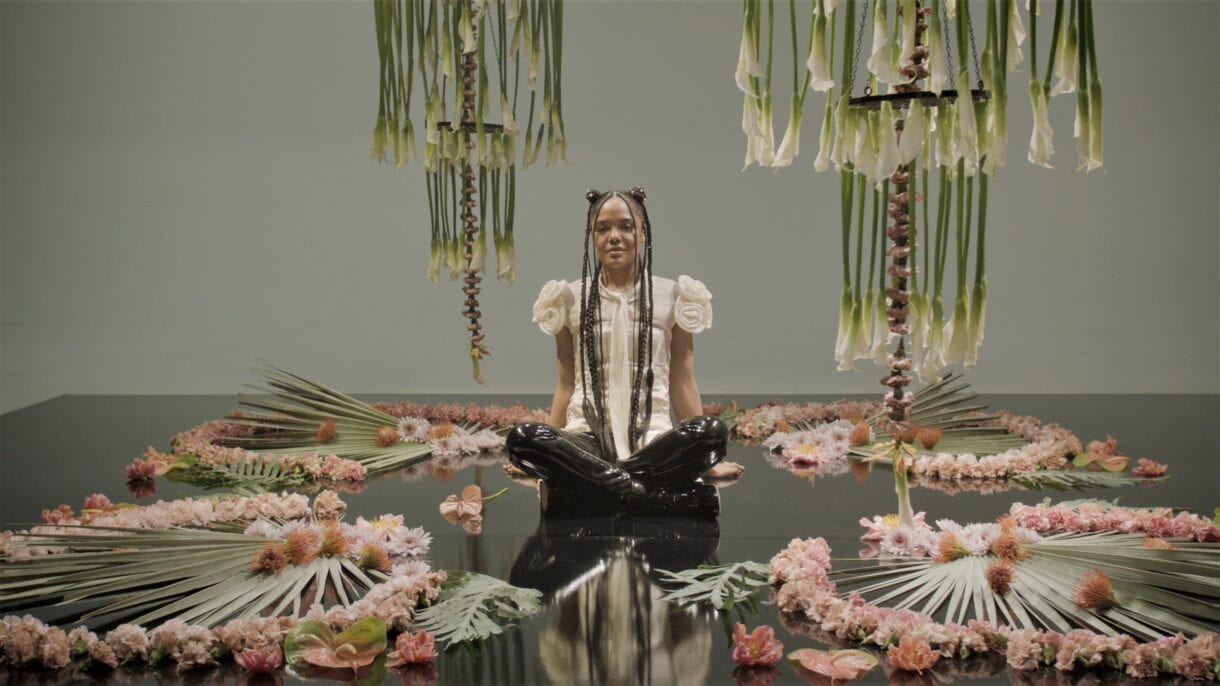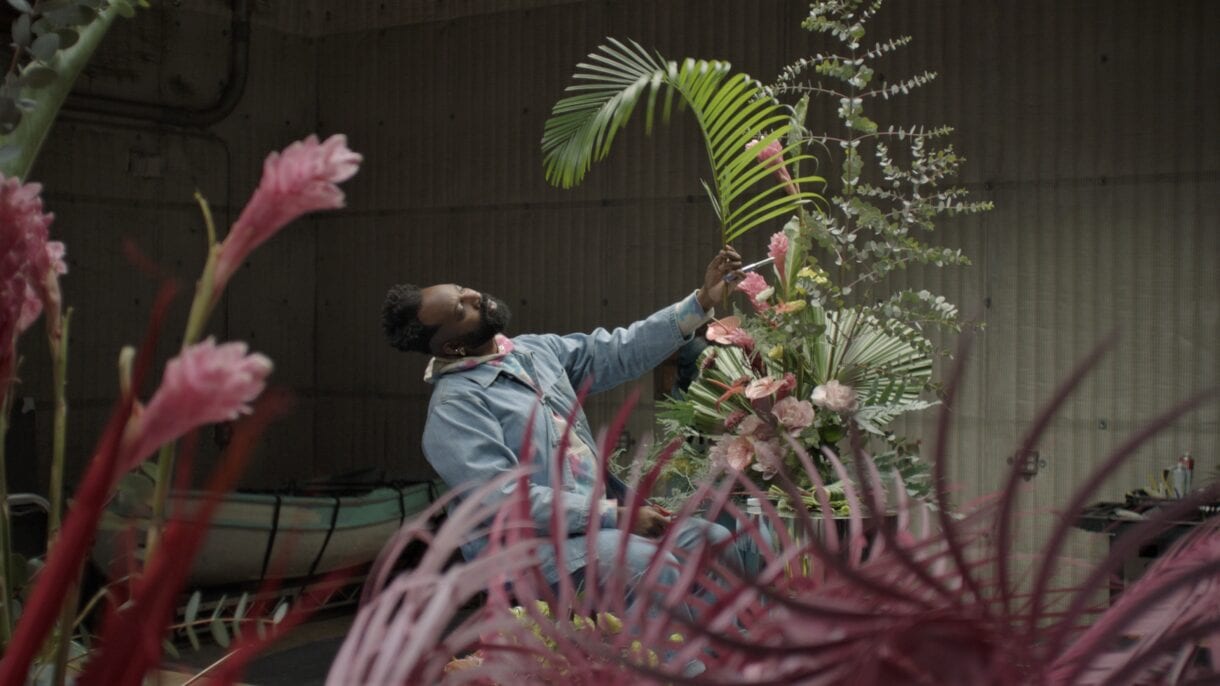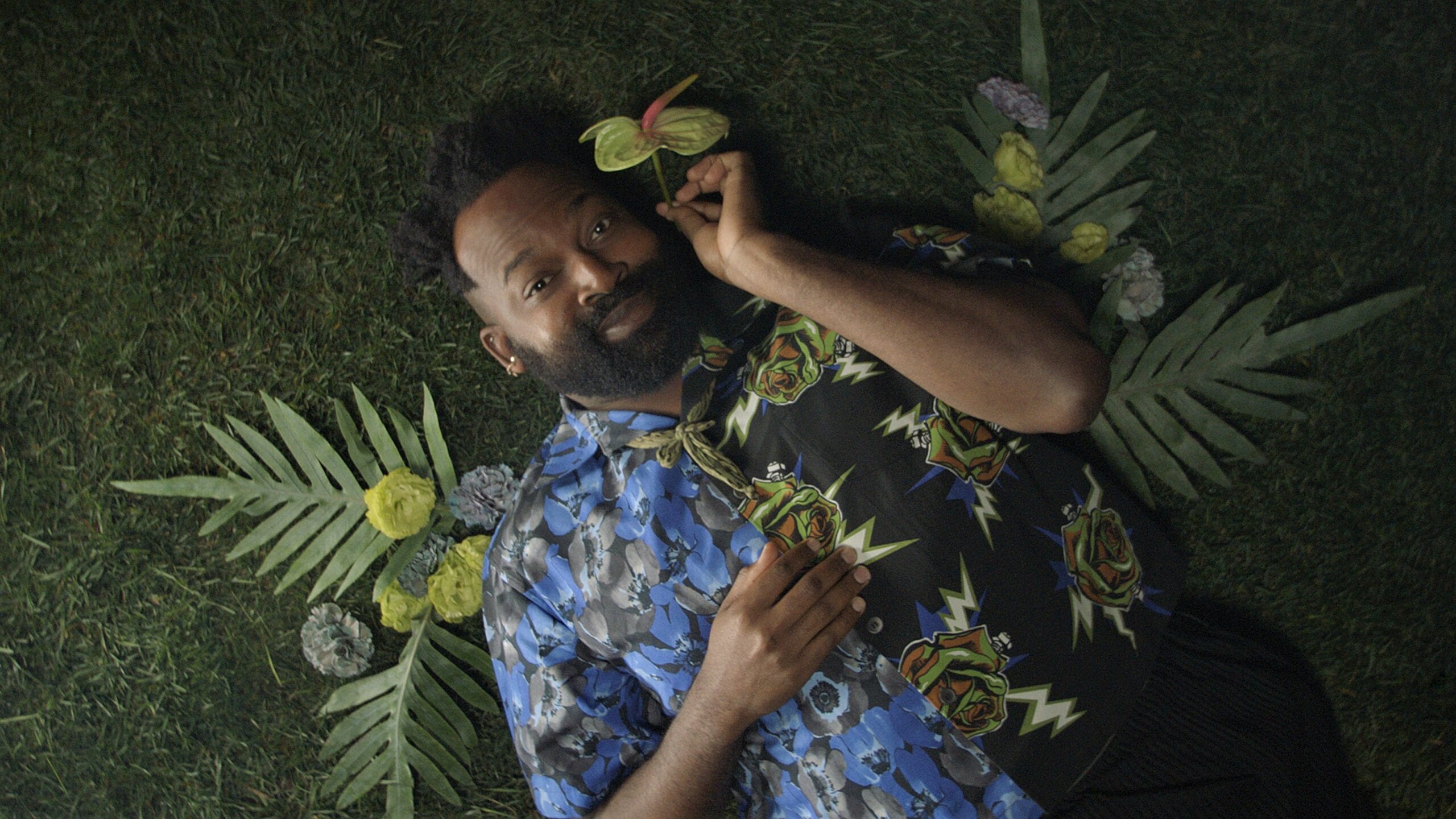Every article written about florist Maurice Harris says the same thing: That his arrangements are more than just your grocery store or bodega bouquet; they are works of art. Those articles aren’t wrong. Just take a look at the Beyoncé-approved display Harris designed for the Queen & Slim movie premiere afterparty, his arrangements exhibited at the Museum of Contemporary Art or the extravagant pieces he makes every episode in his Quibi show, Centerpiece. The Los Angeles-based artist is helping to redefine his industry.
“I’ve always been interested in thinking about [flowers] differently,” he says in a phone interview. His inspiration? “Fashion, hair, makeup, stylists… all of the quintessential behind-the-scenes, Black, gay, best-friend jobs that we all have,” he says. “I wanted to figure out a way to carve my own niche in [florist] spaces, [not] trying to particularly serve the market but trying to contribute to the market and have people get on board.” Harris says he’s always been “a creative person that just has to be creative.”
But even though he always considered himself an artist, he initially thought that being one full-time wasn’t a sustainable career decision. “I was raised with mediocre means, so I just was like, I don’t really want that to be my reality. I want to graduate from that,” he says. So he decided to go into window display because, he says, he saw it as “a creative medium that was more sustainable.” It was a more corporate environment; a steady cheque was guaranteed. While working for Barneys and Juicy Couture, he began doing flowers on the side as a way to have a creative practice that was just his. Then the 2008 economic crash happened, and he was laid off. Amid a number of odd jobs, the idea of working with flowers kept presenting itself.
With a degree from Otis College of Art and Design under his belt, the Stockton, California native started Bloom and Plume in 2010—a luxury floral studio (which now has a companion coffee shop) in the Echo Park area of Los Angeles. With an Instagram following upwards of 204,000, he’s become a sought-after designer for custom arrangements for major brands like Louis Vuitton, Nike, Gucci and Warby Parker and noted celebrities—all of which led to the creation of Centerpiece, his mini talk show on which he interviews Black celebrities and creates a floral arrangement inspired by their conversations. His guests have included actress Tessa Thompson, Broadway playwright Jeremy O. Harris and actress Rashida Jones (who executive produces Centerpiece) among others. I spoke with Maurice Harris about the show, his passion for flowers and how he brings his Black gay self into his work.
Everyone says you’re revolutionizing flowers. Your work seems to be proof of that. How do you think you got to this point of having such a reputation?
I’ve always felt like flowers were one of those things where, when I started back in the early, mid-2000s, it hadn’t really been touched since the mid-1990s [in terms of] what luxury flowers look like. So I was like, “Oh, I think there’s room to play. There’s room to make a mark here.” I’ve always had that in the back of my mind… but I had to have more of an adaptive model where I met clients where they were at and with what they needed, and I’d contribute to what they had going on in their aesthetic, finding ways to constantly insert myself. As Instagram became more of a medium, that’s where I really started to let my personality and my way of creating shine through an arrangement because it felt like a beautiful vehicle to talk about anything.
I think Instagram is where I first discovered your work.
Well, I like carving my own path in many ways, and so I felt like that was a way to do it while having integrity in how I was going to redefine this industry, and not in an egotistical, arrogant way. I had no idea how to do that. I didn’t know what that looked like. I just knew that it could be done, if I worked hard enough and practiced my craft long enough—put in my 10,000 hours. Kind of like Vidal Sassoon did, not knowing that 10 years later he would create the five-point cut that would revolutionize the hair industry.
But you’re not just putting flowers in a vase. You are creating extravagant pieces. At what point in your journey did you begin thinking bigger than just the vase?
I wanted to carve out space for creativity to manifest in a sustainable way using a new model. Kind of like an Andy Warhol model where it’s like, Is it fine art? Is it commercial? Is it high end? Is it low end? Is it both? I really am attracted to that and I love using beauty as an entry tool to talk about deeper and stronger and more painful issues. So, flowers just bring joy to everybody’s life, theoretically. What does that look like when those arrangements are coming from Black hands? What does it look like to re-engage with nature in a way where my slave history and nature is so complicated? How do I re-empower that language? How do I re-empower how I interact with those things? I think those are things that were really important to me along my journey.

Actress Tessa Thompson photographed with her "Centrepiece" creation. Credit: Courtesy Quibi
With Centerpiece, you’re specifically interviewing Black artists and creating works based on their lived experiences. I love how it speaks to the vastness of Blackness. But what was your motivation for this specific setup?
I think that Black stories are often told through the lens of white people. And I also feel we’re fetishized, in terms of always being seen as other as opposed to just normal, even though we dominate culture in so many ways. We often don’t have opportunities to see and celebrate each other. It was important to me to look at Black excellence and peel back those layers of how that really comes about. Because it’s not this magical, mystical thing that happens—it’s hard work, dedication and sacrifice. What I try to do through my show is look at sacrifice, at pain, because I think the most beautiful things come out of pain and suffering and the resilience of Black people, of 400 years of oppression and slavery. We keep overcoming, and so I wanted to do that through my Black lens, because I think we are able to see each other a lot better, or we feel way more comfortable when we’re looking at each other as opposed to a white person with their gaze on us.
I read somewhere that you consider your style to be “natural opulence.” Can you explain?
I like things to look like they belong that way. I want you to be overwhelmed by the experience, but I don’t want it to feel like it’s been handled or manipulated too much, where it feels like I’ve dominated what you’re seeing. I like to play baby Jesus and curate it in a way where it looks natural. But you’re never really going to see in nature a tropical stem next to a desert stem, or a spring stem next to a winter pine. I like to mix and match those elements, hard and soft, bright and docile. I love juxtaposition because I think it creates a lot more dimensions. And so I want this element that is like, “Oh my God, what is this?” But I also want it to feel easy. That’s what natural opulence is about.

Maurice Harris at work. Credit: Courtesy Quibi
As more people discover the show, you and your work, what do you hope they take away from it?
Liberation and freedom. That is my thesis of life essentially, from my flower studio to my coffee shop to Centerpiece. It is about showing what liberation and freedom can look like. And even though I don’t feel free, I’m in the process of gaining that and trying to write a blueprint of how to get there.


 Why you can trust Xtra
Why you can trust Xtra


